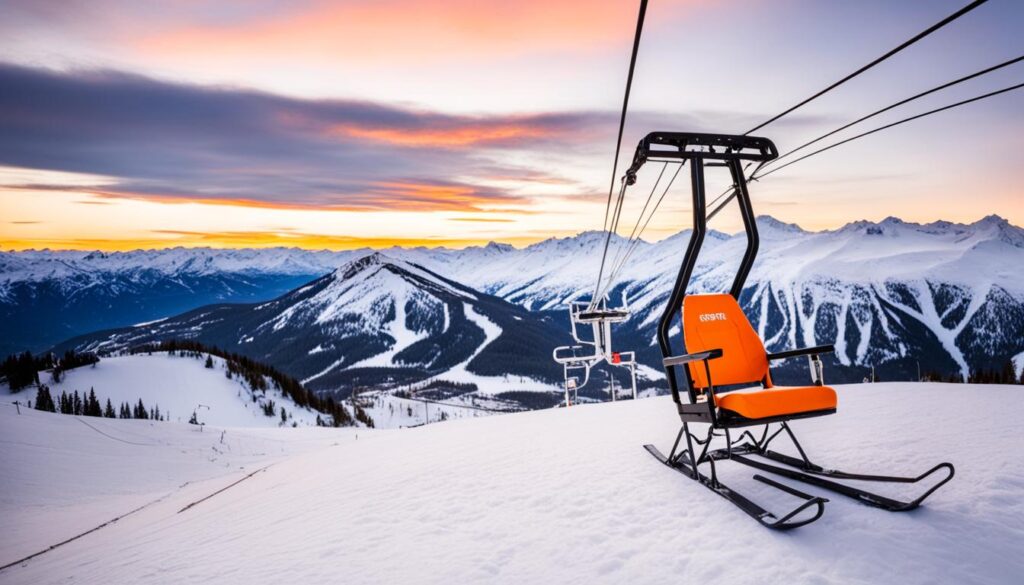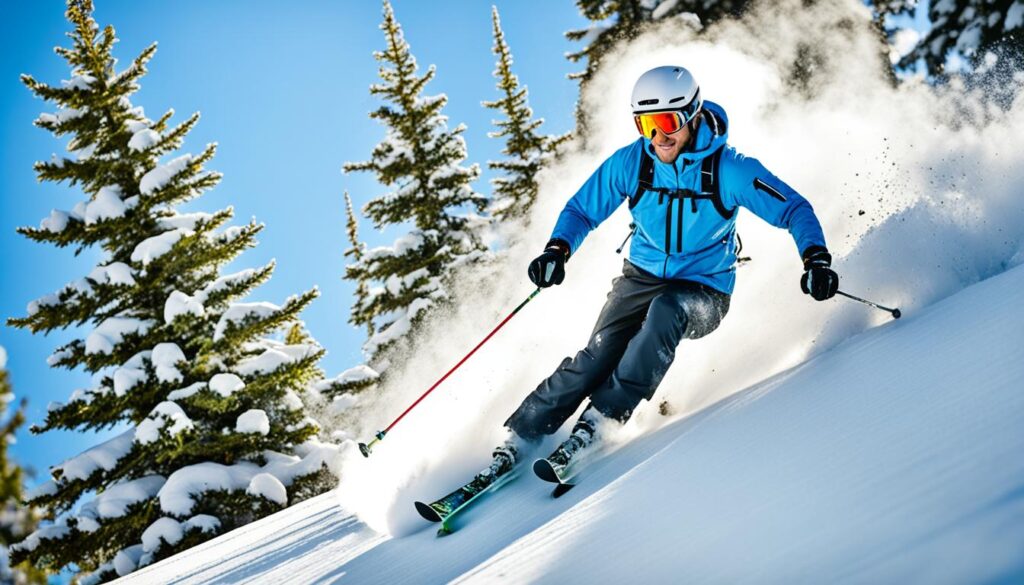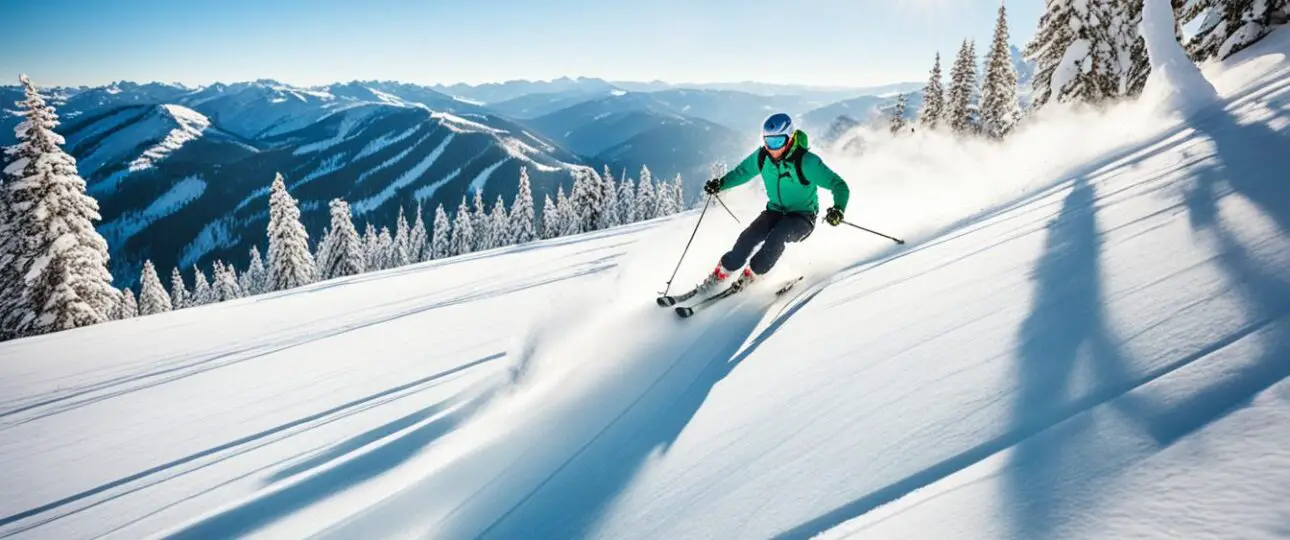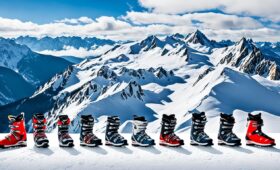As the winter months roll in, avid skiers and snowboarders eagerly anticipate the start of the ski season. But just like any good thing, the ski season must come to an end. If you find yourself wondering when does ski season end and what factors influence the closing dates of ski resorts, we’ve got you covered.
A ski season typically spans from early to mid-winter until mid- to late spring, depending on the latitude and altitude of the resort. In the United States, the ski season generally lasts from late November to early April, but there are exceptions. Larger resorts in Colorado and California, such as Squaw Valley and Mammoth Mountain, may keep their lifts running as late as the 4th of July, offering a truly unique ski experience.
Artificial snowmaking, introduced in the 1950s, has revolutionized the ski industry. This innovative technology allows resorts to maintain snow even in regions with limited natural snowfall, extending the ski season in certain areas. However, the length of the ski season can vary from year to year and from mountain to mountain, contingent on weather conditions and other factors.
Curious about the different stages of the ski season and the factors that influence ski resort closure? Read on to discover more.
Key Takeaways:
- The ski season typically runs from early to mid-winter until mid- to late spring.
- Resorts in the United States generally operate from late November to early April.
- Artificial snowmaking has extended the ski season, particularly in Colorado and California.
- Factors such as weather conditions, business viability, and operating costs can influence ski resort closure decisions.
- Larger resorts like Squaw Valley and Mammoth Mountain may extend their operations into the summer months.
Stages of the Ski Season
A typical ski season can be divided into three stages:
- Off-peak: This is the beginning and ending of the season when the number of lifts open is limited and the snow cover in lower sections of the mountain may be patchy.
- Shoulder: During this stage, the entire mountain is snow-covered, but not all lifts or areas of the mountain may be open, as lift pass sales may not justify the cost of operation.
- Peak: This is the height of the ski season when all or most lifts and runs are open. Peak periods often coincide with school or public holidays.
In each stage, skiers and snowboarders experience different skiing conditions and availability of facilities. The off-peak season offers the opportunity to enjoy quieter slopes and potentially lower-priced tickets. The shoulder season provides a balance as more lifts open up, providing access to a larger portion of the mountain. Lastly, the peak season offers the full skiing experience with all lifts and runs operational, but it can also be the most crowded. Understanding these stages helps skiers plan their trips during their preferred skiing conditions and manage their expectations accordingly.
During the off-peak and shoulder seasons, it’s important to note that not all areas of the mountain may be accessible. However, ski resorts usually prioritize opening trails at higher elevations, as they tend to retain snow cover for longer periods. This ensures that skiers can still enjoy quality skiing despite limitations during these stages.
If you’re interested in finding out more about the specific conditions and terrain available during each stage of the ski season, refer to the table below:
| Stage | Conditions | Terrain |
|---|---|---|
| Off-peak | Limited lifts open, patchy snow in lower sections | Higher elevation trails may have consistent snow cover |
| Shoulder | Snow-covered mountain, not all lifts open | Limited access to certain areas |
| Peak | All or most lifts and runs open | Full access to the entire mountain |
Factors Influencing Ski Resort Closure
Ski resorts may close even when there is still ample snow on the slopes due to several factors:
- Lack of business: Ski resorts heavily rely on revenue from season pass holders and day visitors. Once pass holders have paid for their season passes, there is no additional revenue from them. Day visitors also tend to decrease as the weather gets warmer and other outdoor activities become more appealing.
- Weather and snow conditions: As the weather warms up, snow conditions can deteriorate, making it suitable for only a few hours of skiing. Snow can become hot and sticky, diminishing the overall skiing experience. Additionally, there can be day-to-day shifts in snow depth, requiring extra labor and time to maintain the lifts and runs.
- Operating costs: Ski resorts incur significant costs to operate chairlifts, groomers, ski patrol, and other resort features. Staying open during the later part of the snow season can be financially challenging, especially as visitor numbers decline. The combination of dwindling revenue and high operating costs may lead resorts to make the decision to close for the season.
| Ski Resort Closure Factors | Impact |
|---|---|
| Lack of business | Decreased revenue and visitor numbers |
| Weather and snow conditions | Diminished snow quality and extra maintenance efforts |
| Operating costs | Financial strain due to declining revenue |

Ski resorts carefully evaluate these factors to make informed decisions about when to close for the season. While snow conditions play a significant role, the financial viability of the resort and visitor demand are equally important considerations.
Ski Season Closing Dates in the United States
Ski resorts in the United States have projected closing dates that are subject to change depending on snow conditions and other factors. Here are some examples of closing dates for ski resorts in different regions:
| Ski Resort | Closing Date |
|---|---|
| Cataloochee Ski Area | March 25th |
| Squaw Valley and Mammoth Mountain | Remain open through July |
| Hidden Valley Ski Area | Closing in early March |
| Sapphire Valley | Closing in early March |
| Snow Creek | Closing in early March |
| Whitetail Resort | Closing in early March |
| Coffee Mill Ski & Snowboard Resort | Closing in mid-March |
| Devils Head | Closing in mid-March |
| Seven Oaks | Closing in mid-March |
| Winterplace Ski Resort | Closing in early to mid-March |
| Canaan Valley Resort | Closing in early to mid-March |
Note: Closing dates are subject to change. Please check with individual ski resorts for the most up-to-date information.
Late-Season Skiing Opportunities
Squaw Valley and Mammoth Mountain are ski resorts known for their ability to remain open late into the spring and even summer months. These resorts have upper mountain areas that can sustain skiable snow and can consolidate their late-season clientele once other resorts have closed. Late-season skiing often offers softer snow conditions, making it more appealing for skiers to try more challenging terrain. Squaw Valley, in particular, is known for its advanced terrain that becomes more negotiable for average skiers during the spring.
Late Season Skiing Opportunities
For ski enthusiasts looking to extend their season, Squaw Valley and Mammoth Mountain offer incredible late-season skiing opportunities. These renowned ski resorts have the advantage of remaining open well into the spring and even summer months, thanks to their upper mountain areas that sustain skiable snow even when other resorts have closed their doors.
One of the highlights of late season skiing is the opportunity to experience softer snow conditions. As the temperature warms up, the snow becomes more forgiving, making it especially appealing for skiers to venture onto more challenging terrain.
Squaw Valley, in particular, is known for its advanced terrain that becomes more accessible for average skiers during the spring. It offers a range of thrilling runs and expansive ski resort terrain to explore, ensuring an unforgettable experience for skiers of all levels.
As the season draws to a close, late-season skiing at Squaw Valley and Mammoth Mountain provides a unique and exhilarating opportunity to make the most of the remaining snow and enjoy the slopes when most other ski resorts have already closed.

Benefits of Late-Season Skiing
- Softer snow conditions for a more enjoyable skiing experience
- Access to more challenging terrain as the snowpack consolidates
- Less crowded slopes for a more relaxed and intimate skiing atmosphere
- Opportunity to take advantage of end-of-season discounts and promotions
Late-season skiing offers the perfect opportunity to soak up the sunshine, enjoy the stunning mountain landscapes, and savor those final moments on the slopes before the ski season comes to a close.
Conclusion
The ski season wrap-up is a time when ski enthusiasts bid farewell to their favorite slopes and resorts. As the ski destination closing dates approach, skiers and snowboarders make the most of the remaining snow, enjoying exhilarating runs down the slopes.
Throughout the ski season, resorts across the United States offer thrilling skiing experiences, with the typical ski season running from late November to early April. However, some resorts extend their operations into the summer months, allowing skiers to continue enjoying the thrill of skiing even as the temperatures rise.
The introduction of artificial snowmaking technology has transformed the ski industry, enabling resorts to maintain quality snow cover in regions with limited natural snowfall. This innovation has allowed ski destinations to push their closing dates further, providing skiers with extended opportunities to indulge in their winter sport passion.
Squaw Valley and Mammoth Mountain are renowned for their ability to offer late-season skiing. Even after other resorts have closed for the season, these destinations provide skiers with the chance to hit the slopes and experience the thrill of skiing on softer snow. Late-season skiing at these resorts is a truly unique experience for skiers, as they can explore challenging terrains and enjoy the beauty of the mountains during the spring months.
As the ski season wrap-up approaches, skiers and snowboarders across the United States reflect on the memories made and the adventures had on the slopes. It’s a time to plan those final runs down the mountains, savoring every moment of the remaining snow before it melts away. So grab your gear, hit the slopes, and make the most of the ski season wrap-up!



